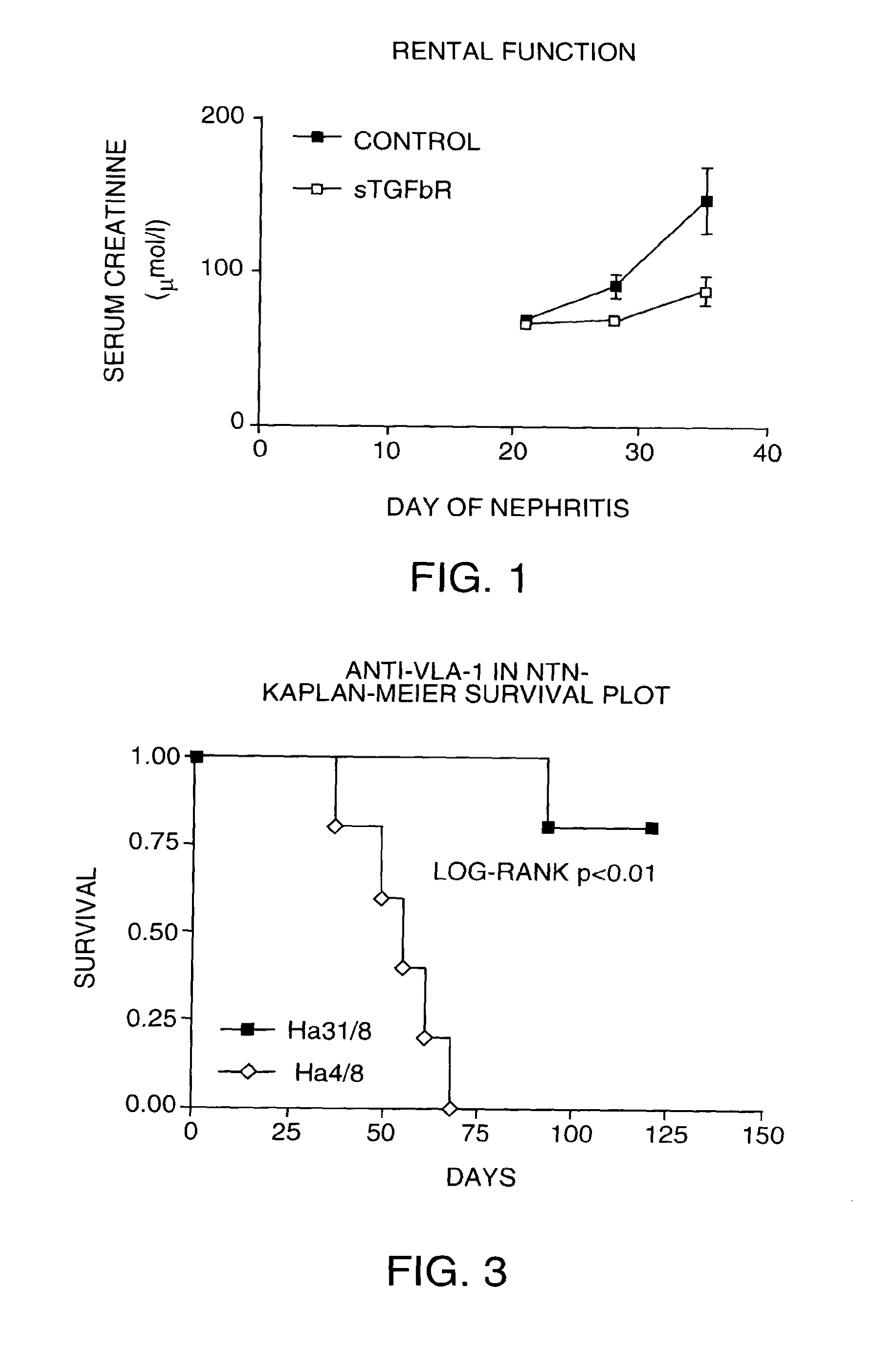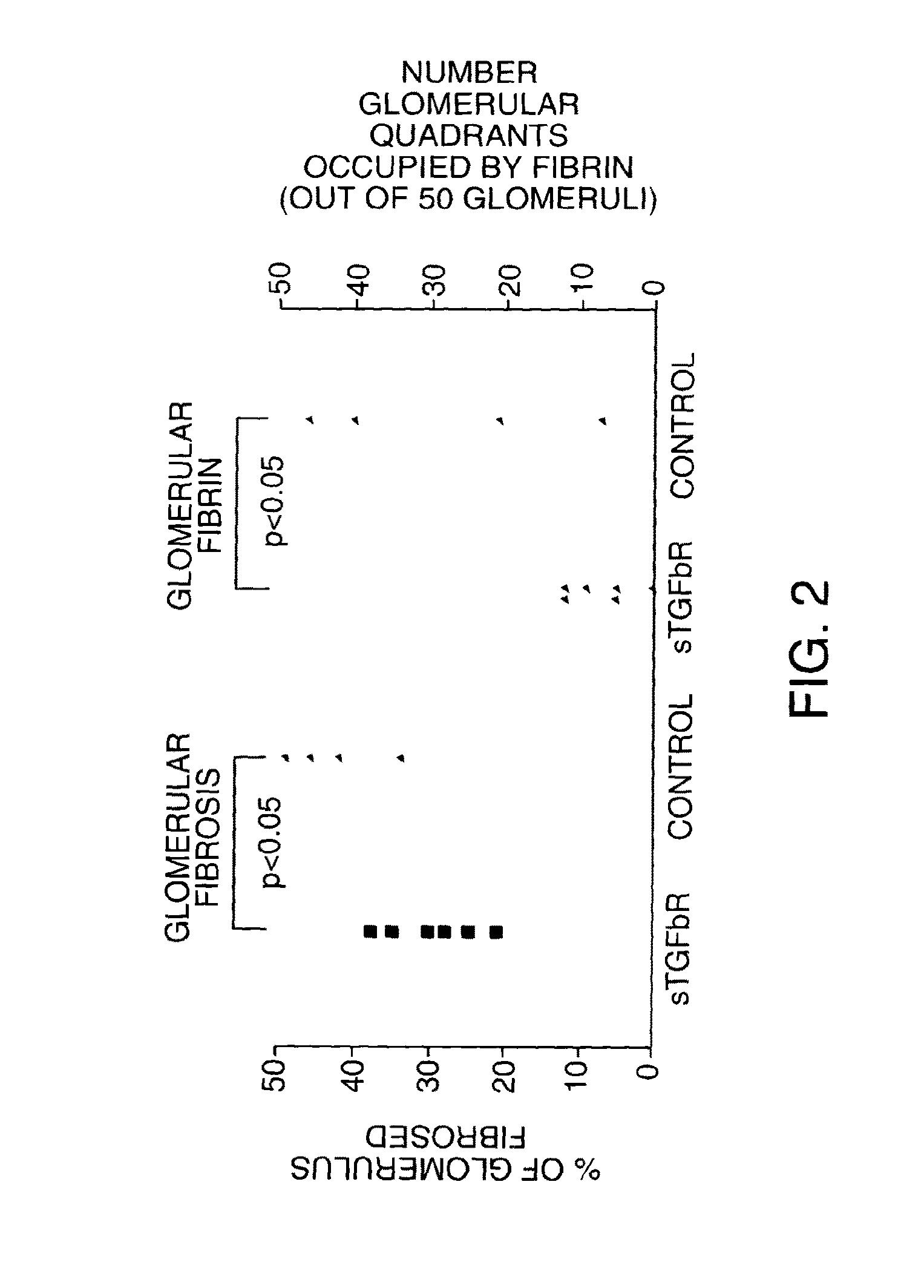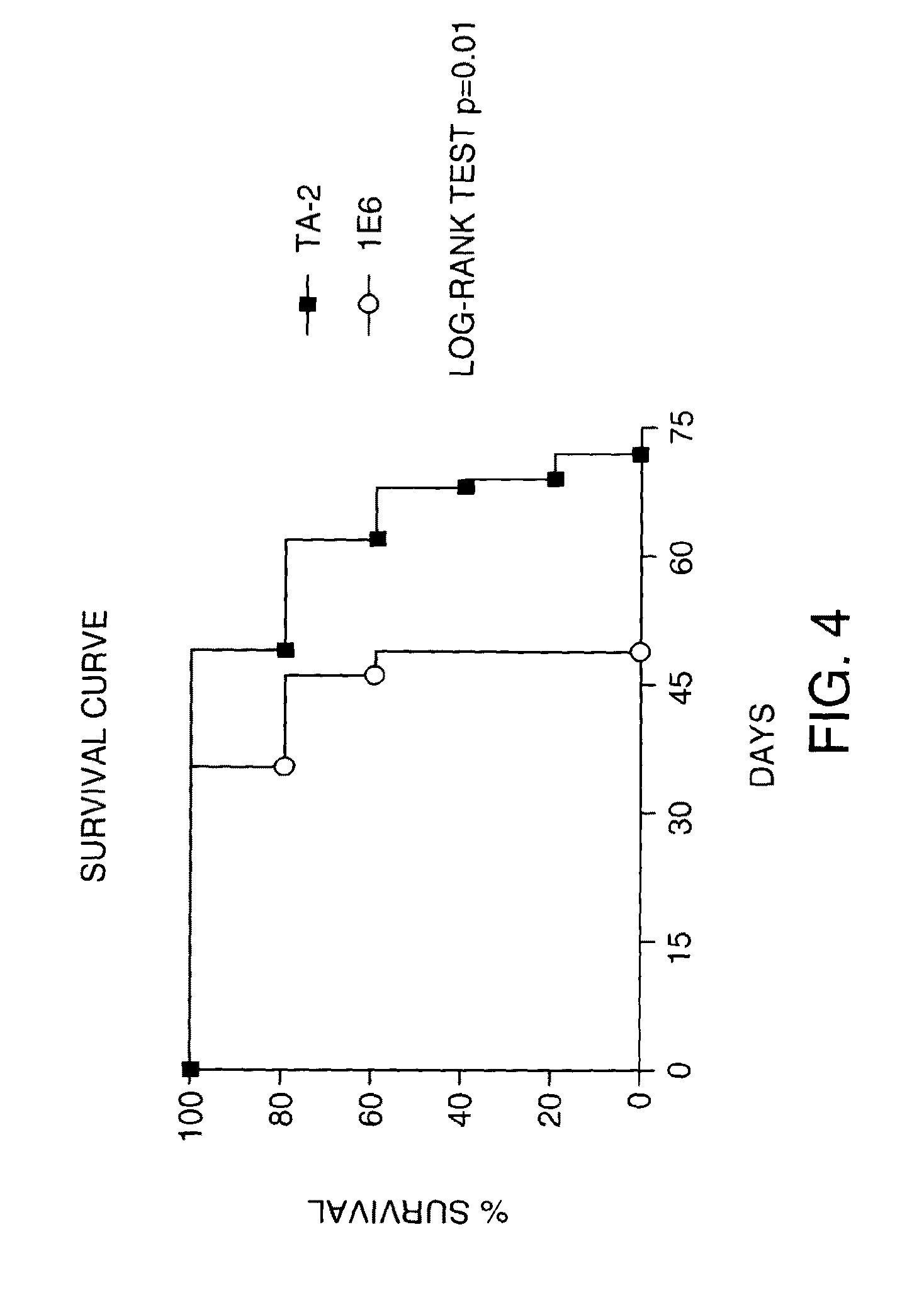Therapies for chronic renal failure using one or more integrin antagonists
a technology of integrin antagonists and chronic renal failure, which is applied in the field of renal disease treatment methods, can solve the problems of slow progressive deterioration of renal function, inability to clarify the importance of cell adhesion molecules in chronic renal disease, and many organ systems, especially the cardiovascular system, may rapidly begin to fail, so as to prevent or delay the need for chronic dialysis, and reduce the necessary frequency of chronic renal dialysis
- Summary
- Abstract
- Description
- Claims
- Application Information
AI Technical Summary
Benefits of technology
Problems solved by technology
Method used
Image
Examples
example 1
Renal Failure Animal Model
[0133]Intravenous injection of high-titer anti-rat glomerular basement membrane (GBM) serum (NTS) into WKY rats leads to deposition of rabbit IgG on rat GBM where it acts as a planted antigen and initiates a vigorous inflammatory response, characterized by up-regulation of proinflammatory cytokines and adhesion molecules such as ICAM-1 and VCAM-1, together with recruitment of leukocytes into glomeruli. The cell influx is predominantly monocytic with CD8+ cells also present, although these are not classical T cells. Some co-express CD8 and the rat monocyte / macrophage marker ED 1 (CD68 equivalent), suggesting that they represent a macrophage subset.
[0134]Cell influx is underway by day 1 of this nephrotoxic nephritis model (NTN), and glomerular leukocyte counts peak at day 3-4. Renal injury is apparent in the form of proteinuria by day 4, and fibrinoid necrosis and crescent formation occur within glomeruli by day 7.
[0135]Inflammatory interstitial infiltrates a...
example 2
TGFbeta Antagonist Effects in Acute v. Chronic Stages
[0148]TGFbeta has a well established role in the pathogenesis of renal failure. We used a soluble dimeric rabbit TGFbeta receptor type II on a human Fc stem (see Smith, P. D., et. al., Circ. Res. 84: 1212-1222 (1999)) to act as a TGF beta antagonist in vivo. Soluble TGFbeta receptor as an Fc fusion was given by i.p. injection every 3rd day starting on day—1 at 5 mg / kg. Administration continued for the duration of the experiment with PBS used as a control. NTN was induced as above on 12 rats on day 0 and half the rats were killed on day 9, the remained killed on day 21. No significant effects on albuminuria or creatinine clearance were seen, although there was a trend to less fibrinoid necrosis in glomeruli at all timepoints studied. No differences in crescent counts were seen between groups. Immunohistochemistry showed that the TGF beta antagonist had no significant effects on: 1) glomerular cellular infiltrates (EDI+macrophages o...
example 3
Anti-VLA-1 Antibody Homolog Effects on Acute v. Chronic Stages
[0150]Antibodies to VLA-1 were evaluated in short term studies extending to day 10. A hamster antibody (Ha3 1 / 8) to the rat alpha 1 integrin VLA-1 was administered on day-1 and then on days 1, 3, 6 and 8. A control antibody (HA4 / 8) was also administered. At a dosage of 2.5 mg / kg i.p., there were no significant effects on albuminuria between antagonist and control. We also saw no effects on glomerular fibrinoid necrosis or crescent formation with either antibody at any dose.
[0151]The chronic study followed a similar protocol as the soluble TGFbeta receptor study, above, except that antibodies were given from days 14-28. Twenty four rats were induced with NTS on day 0, ten received anti-VLA-1 (Ha3 1 / 8) from days 14-28, ten received control antibody (Ha4 / 8) for the same period. Four rats were killed at day 14 for baseline histology. Ten rats were killed at day 35 for histology (5 treated and 5 control). Ten rats remained in ...
PUM
| Property | Measurement | Unit |
|---|---|---|
| temperature | aaaaa | aaaaa |
| weight | aaaaa | aaaaa |
| adhesion | aaaaa | aaaaa |
Abstract
Description
Claims
Application Information
 Login to View More
Login to View More - R&D
- Intellectual Property
- Life Sciences
- Materials
- Tech Scout
- Unparalleled Data Quality
- Higher Quality Content
- 60% Fewer Hallucinations
Browse by: Latest US Patents, China's latest patents, Technical Efficacy Thesaurus, Application Domain, Technology Topic, Popular Technical Reports.
© 2025 PatSnap. All rights reserved.Legal|Privacy policy|Modern Slavery Act Transparency Statement|Sitemap|About US| Contact US: help@patsnap.com



